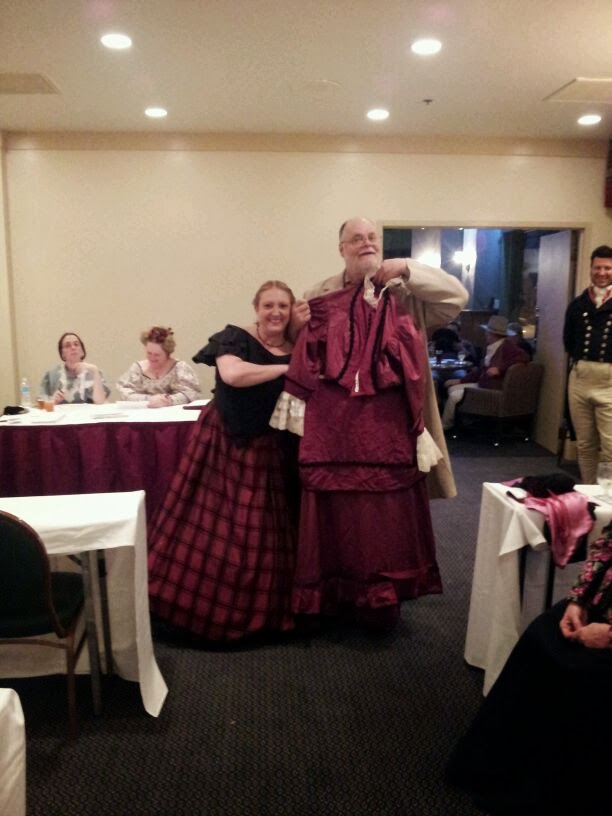My trip from Austin to San Antonio, which usually takes an hour and a half at the most, took about three hours. This was due to a semi-truck having jack knifed on the highway and they shut it down to allow for the wrecker to get the truck off the road. Because of all these delays sessions were pushed back on Friday.
The workshops on Friday were held at the Alamo complex. Sessions included a workshop on period etiquette and cockades. I conducted a workshop on sewing bricks or weighted pincushions so was unable to get pictures of any of the other workshops.
Many of the participants stayed at the Crockett Hotel, just behind the Alamo. I shared a room with two of my reenacting friends. The room was nice; I really liked it. And we had a great view of the Alamo courtyard. The workshops ended around dinner time, so we met up with some other friends and went down to the Riverwalk for dinner.
Saturday began early at 8:00 a.m. at the Institute of Texan Cultures.
The opening speaker was Steve Abolt speaking on “Heatstroke, Bug Bites and
the Green Apple Quick Step. A Private History of a Campaign that
Succeeded."
Lunch followed the morning sessions.
The afternoon sessions offered my presentation on interpreting the Civil War home front in Texas and Tools
for Building the Craft presented by Jim Lauderdale of Nash Farm in Grapevine.
My
presentation went long. I thought I had it down to time, but nope...plus
I was so nervous. I don't know why, but it was painful.
Following the concurrent sessions a roundtable on the
future of living history was held. The panelist discussed how to get
younger generations involved. Many suggestions were brought up but the
strongest was to find something that them in and got them interested; we
can't depend on the love of history alone.
.jpg)
The last day of the conference started not quite so early. Sunday's sessions were held in and around the Alamo. Choices were Beer in the Southwest presented by Ian
Beard from the Old State House Museum of Arkansas, 19th Century Medicine presented by Jim Rice, and The
Trinity Mills Ledger: Texas Consumerism and Daily Life on the
eve of the Civil War presented by Hal Simon of the Texas Historical Commission.
I attended Hal's presentation on the Trinity Mills Ledger. He has told me about this ledger and I was so excited to hear his presentation. It was wonderful; a great resource for researching civilian life in Texas during the Civil War. I am so hoping he publishes this information soon. The ledger dispels many myths about life in Texas during the 1860s.
So ended this year's conference. Living history participants should really consider attending this conference. Great networking and learning opportunity.
More pictures on Flicker.
